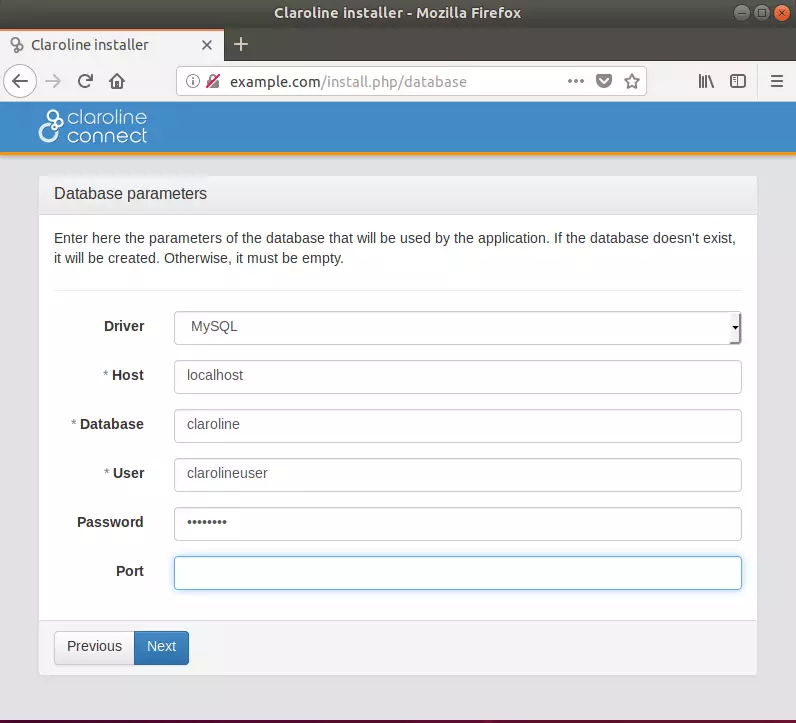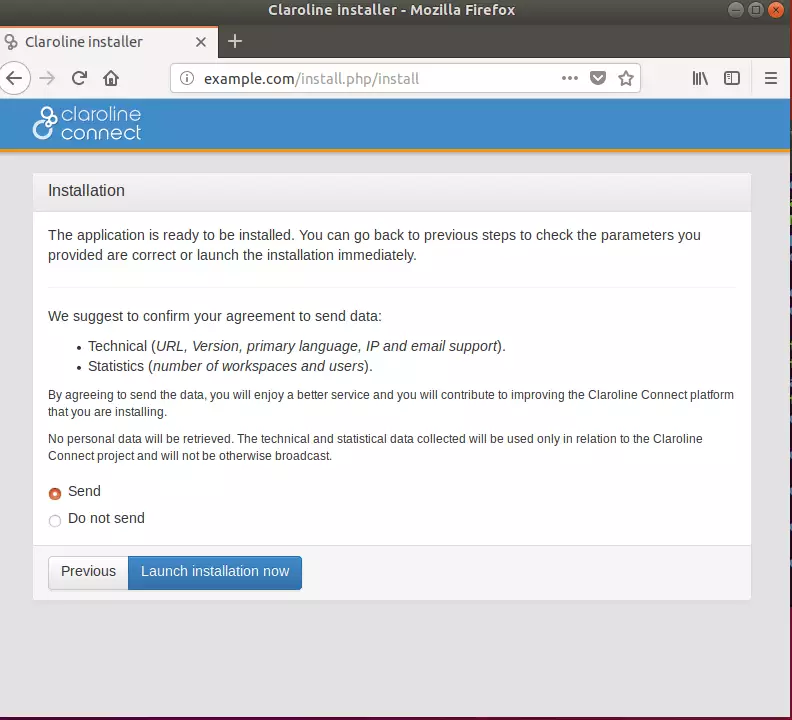This article explains installing Claroline LMS with Apache support on Ubuntu Linux.
Claroline LMS is a free and open-source learning management platform designed for educators and built on the LAMP/LEMP stack. It allows users and educators to create educational communities, publish coursework, and work together while improving global access to education and knowledge.
Installing Claroline LMS with Apache support on Ubuntu Linux is a great way to leverage the platform’s capabilities and provide a robust and secure e-learning environment.
Apache is the most popular web server in use. Ubuntu Linux is a reliable and stable operating system widely used in the server world, making it a great choice for hosting Claroline LMS.
For more about Claroline LMS, please check its Homepage
When you’re ready to get Claroline installed, follow the steps below
Install Apache2 HTTP Server on Ubuntu
Apache2 HTTP Server is the most popular web server in use. Install it since Claroline LMS needs it.
To install Apache2 HTTP on the Ubuntu server, run the commands below.
sudo apt update sudo apt install apache2
After installing Apache2, the commands below can stop, start, and enable the Apache2 service to always start up with the server boots.
sudo systemctl stop apache2.service sudo systemctl start apache2.service sudo systemctl enable apache2.service
To test the Apache2 setup, open your browser and browse to the server hostname or IP address. You should see the Apache2 default test page, as shown below.
http://localhost

Install MariaDB Database Server
MariaDB database server is a great place to start when looking at open-source database servers for Magento. To install MariaDB, run the commands below.
sudo apt-get install mariadb-server mariadb-client
After installing MariaDB, the commands below can stop, start, and enable the service to start when the server boots.
Run these on Ubuntu 16.04 LTS
sudo systemctl stop mysql.service sudo systemctl start mysql.service sudo systemctl enable mysql.service
Run these on Ubuntu 17.10 and 18.04 LTS
sudo systemctl stop mariadb.service sudo systemctl start mariadb.service sudo systemctl enable mariadb.service
After that, run the commands below to secure the MariaDB server by creating a root password and disallowing remote root access.
sudo mysql_secure_installation
When prompted, answer the questions below by following the guide.
- Enter current password for root (enter for none): Press the Enter
- Set root password? [Y/n]: Y
- New password: Enter password
- Re-enter new password: Repeat password
- Remove anonymous users? [Y/n]: Y
- Disallow root login remotely? [Y/n]: Y
- Remove test database and access to it? [Y/n]: Y
- Reload privilege tables now? [Y/n]: Y
Restart MariaDB server
Type the commands below to log on to the MariaDB server to test if MariaDB is installed.
sudo mysql -u root -p
Then, type the password you created above to sign on. If successful, you should see a MariaDB welcome message.

Install PHP 7.1 and Related Modules
PHP 7.1 may not be available in Ubuntu default repositories. To install it, you must get it from third-party repositories.
Run the commands below to add the below third party repository to upgrade to PHP 7.1
sudo apt-get install software-properties-common sudo add-apt-repository ppa:ondrej/php
Then update and upgrade to PHP 7.1
sudo apt update
Next, run the commands below to install PHP 7.1 and related modules.
sudo apt install php7.1 libapache2-mod-php7.1 php7.1-common php7.1-sqlite3 php7.1-curl php7.1-mcrypt php7.1-intl php7.1-mbstring php7.1-xmlrpc php7.1-mysql php7.1-gd php7.1-xml php7.1-cli php7.1-ldap php7.1-apcu php7.1-zip
After installing PHP 7.2, run the commands below to open the PHP default config file for Apache2.
sudo nano /etc/php/7.1/apache2/php.ini
Then, save the changes on the following lines below in the file. The value below is an ideal setting to apply in your environment.
file_uploads = On allow_url_fopen = On short_open_tag = On memory_limit = 256M upload_max_filesize = 100M max_execution_time = 360 date.timezone = America/Chicago
After making the change above, please save the file and close it.
After installing PHP and related modules, you must restart Apache2 to reload PHP configurations.
To restart Apache2, run the commands below
sudo systemctl restart apache2.service
To test PHP 7.2 settings with Apache2, create a phpinfo.php file in the Apache2 root directory by running the commands below
sudo nano /var/www/html/phpinfo.php
Then, type the content below and save the file.
<?php phpinfo( ); ?>
Save the file. Then browse to your server hostname followed by /phpinfo.php
http://localhost/phpinfo.php
You should see the PHP default test page.

Create Claroline Database
Now that you’ve installed all the packages required for Claroline LMS to function continue below to start configuring the servers. First, run the commands below to create a blank Magento database.
To log on to the MariaDB database server, run the commands below.
sudo mysql -u root -p
Then create a database called caroline.
CREATE DATABASE claroline;
Create a database user called clarolineuser with a new password
CREATE USER 'clarolineuser'@'localhost' IDENTIFIED BY 'new_password_here';
Then, grant the user full access to the database.
GRANT ALL ON claroline.* TO 'clarolineuser'@'localhost' IDENTIFIED BY 'user_password_here' WITH GRANT OPTION;
Finally, save your changes and exit.
FLUSH PRIVILEGES; EXIT;
Download and Install Claroline LMS
Run the commands below to download Claroline LMS content. Then, unzip the download file and move the content to the Apache2 default root directory.
cd /tmp && wget http://packages.claroline.net/releases/16.05/claroline-16.05.tar.gz tar -xvzf claroline-16.05.tar.gz sudo mv claroline-16.05 /var/www/html/claroline
Next, run the commands below to change the root folder permissions.
sudo chown -R www-data:www-data /var/www/html/claroline/ sudo chmod -R 755 /var/www/html/claroline/
Configure Apache Claroline LMS Site
Finally, configure the Apache2 configuration file for Claroline LMS. This file will control how users access Claroline LMS content. Run the commands below to create a new configuration file called caroline. conf
sudo nano /etc/apache2/sites-available/claroline.conf
Then copy and paste the content below into the file and save it. Replace the highlighted line with your domain name and directory root location.
<VirtualHost *:80>
ServerAdmin admin@example.com
DocumentRoot /var/www/html/claroline/web
ServerName example.com
<Directory /var/www/html/claroline/web/>
Options FollowSymlinks
AllowOverride All
Require all granted
</Directory>
ErrorLog ${APACHE_LOG_DIR}/error.log
CustomLog ${APACHE_LOG_DIR}/access.log combined
</VirtualHost>
Save the file and exit.
After configuring the VirtualHost above, please enable it by running the commands below.
Enable the Claroline LMS Site and Rewrite Module
After configuring the VirtualHost above, please enable it by running the commands below, then restart the Apache2 server.
sudo a2ensite claroline.conf sudo a2enmod rewrite sudo systemctl restart apache2.service
Next, open your browser, go to the URL, and continue with the installation.
http://example.com/install.php
Start the setup wizard by clicking the Install Claroline button. Next, select the installation language and continue.

Confirm that all the required packages are installed.
Your server must provide the following libraries to enable all features of Claroline. The missing libraries shown in orange letters are optional, but some features of Claroline might be turned off if not installed. You can still install those libraries later on to enable the missing features.
When you’re ready, click Next.
Type in the site name and the database connection info.
Claroline needs a single MySQL database with a user that can connect. They recommend that this is a user you have created just for Claroline rather than one you share with other applications. It would be best to make your database before entering the details here. If you’re using a shared host, you may have an option called “MySQL Database Wizard” to speed you through the process.

Create the admin account to use to manage the platform.

Finally, click Launch Installation Now to complete.

You may also like the post below:

Leave a Reply to Ren Cancel reply